This month audiences can screen Rabbit Under the Shed on the Planet Classroom Network. This film is curated for the Planet Classroom Network by KIDS FIRST! Film Festival
Written and directed by Mia Stegner, Rabbits Under the Shed is a short-film created by over 50 students working remotely during the pandemic. This clever, original, animated film tells the story of Natalie, a young girl coming to grips with the realities of growing up.
After running away from home, Natalie moves in with rabbits who give her some valuable insights on life.
The Global Search for Education is pleased to welcome Mia Stegner.
Mia, can you tell us a bit about your inspiration for Rabbits Under the Shed and in particular, the most important lesson you learned about the process of getting this animated film made?
The general idea first emerged in a list of loglines I had to come up with for a Writing Television Pilots class I was taking in summer 2020, and it ended up being the pitch I pursued for that class. I knew I wanted to write a children’s show, and at the time I was spending a lot of time at my desk in my childhood bedroom, which faces our backyard, so I had a great view of our shed and the rabbits that like to populate our garden.
The vast majority of time I spent writing and workshopping the script was supplemented by a view of the rabbits – either from my room or from a tent we put up in our backyard that summer for a change in scenery – which offered a lot of inspiration.
At the time of writing it, I didn’t know I’d end up making the script a reality, and I didn’t think it was possible. But when I decided to graduate a year early and slowly realized that I wouldn’t be returning to campus before graduating, I realized that the type of senior project I’d always imagined was no longer feasible. I accepted the fact that I would be geographically apart from my classmates in my last year, but I didn’t want that to mean I had to create something entirely alone.
Suddenly, the pendulum swung and something I’d written off as impossible reemerged as not only my most exciting option, but also the only one that really made sense. It was ambitious, but the more I thought about it, the more it seemed possible and felt right. Being online and having to do everything remotely anyway also meant we could recruit people from anywhere in the world, so we sent out our crew call to a handful of film schools and animation programs, and we ended up having a really passionate, talented, and diverse team of storyboarders, animators, voice actors, musicians, and more. Gratefully, a lot of the students I recruited from other schools were able to use the hours to count toward their program or as a required internship. Still, I’m really indebted to the animation team and in awe of the amount of work they did in the span of a year.
I could talk about tracking progress visually, trying to incentivize meeting deadlines, or other strategies my producers and I used to keep everyone in touch and on track – but really, it ultimately came down to everyone’s self-motivation and their belief in the project.
Now that I’m no longer a student (and have more appreciation for the amount of time and heart that goes into animation), I would never want to ask anyone to do that many hours of unpaid work on a project I was directing. To anyone currently in film school, take advantage of your proximity (whether or not geographical) to other creatives and their readiness to help you bring your projects to life – and do everything you can to do the same for them. No amount of classes or fancy equipment will teach you more than you can learn from each other, and you may not always have the same amount of time or community to focus on creative work, so don’t take this time for granted. I never could’ve done this alone!
Which strategies do you think proved to be the most effective for maintaining a clear creative vision and workflow?
It was really helpful to create a look-book with some inspiration for styles and colors, and to work with the animation team to create a little cheat sheet of guidelines for brush sizes and styles. The more upfront work you do to make a plan and all get on the same page, the more you set yourself up for success. It was a difficult year for a lot of us, so treating each other with compassion was also really important. We set clear check-in points and tried to keep an open line of communication with everyone, but we also offered a lot of flexibility with actual deadlines.
In the entertainment industry, there is so much emphasis on passion, assertiveness, determination, confidence — those are all great skills that can certainly contribute to success, but that sort of aggressive approach to art can also lead to tunnel-vision or burnout, and can easily cross a line into cruelty. Other, softer ingredients of leadership – compassion, adaptability, patience – are often overlooked, but they can be just as important and carry just as much power, if not more. I’m really proud of myself and the other leaders on the team for finding that balance. I think our collective combination of passion and adaptability was really the key to our success.
How vital is animation to the creative success of this project and perhaps future works of a similar genre?
Rabbits Under the Shed, in more ways than one, would not have been possible without animation. At the time of creating the first episode, I was finishing college from my childhood bedroom – technically I was in film school, but I didn’t have access to campus resources such as film equipment or the convenience of being in the same city as my peers. Even if I had been on campus, all classes were online, and we were in the middle of a pandemic, and at the time it would’ve been extremely difficult to run a film set safely. Between that, the talking animals, my creative vision for the look and style of the story, and the occasional Wonderland-esque shifting proportions of the characters, particularly when Natalie goes under the shed, animation just made sense for the project.
In any form of filmmaking, you aren’t confined to reality, but animation takes it a step further. As much as I’m amazed by the art of production design, location scouting, hands-on lighting, and all the other elements that go into creating every shot of a live action project, you can make the argument that everything has to come from somewhere. In animation, everything has to be created entirely from scratch in a totally different process, all from the artists’ minds, and then recreated again and again and again. There are truly no limits to what you can create with animation and I can’t wait to step even further into that freedom for future projects.
What do you hope will be the audience takeaways? How can Rabbits Under the Shed be an important piece of art for a young person struggling with new realities?
I hope that the audience will learn the same lessons we see Natalie and the rabbits learn – that by going outside of your comfort zone, you can make new friends in unexpected places. “The world can be more kind, and a lot more fun, if we open up our hearts and make room for everyone.” If we embrace difference rather than fear it, we can break the “food chain” and respect each other instead of competing for power. Sometimes, things that seem scary at first – like broccoli or hawks – aren’t always what they seem.
Thank you Mia!
C.M. Rubin and Mia Stegner
Don’t Miss Rabbits Under the Shed, now streaming on the Planet Classroom Network. This film is curated for the Planet Classroom Network by KIDS FIRST! Film Festival.

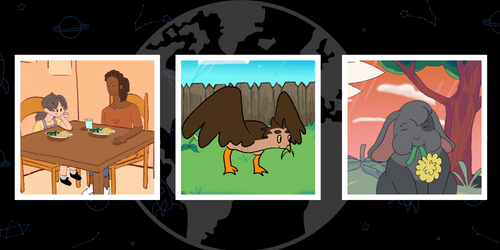
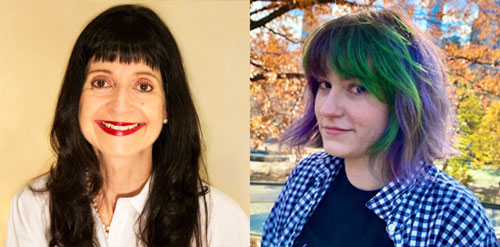
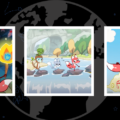
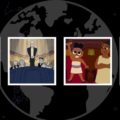

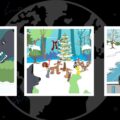
Recent Comments